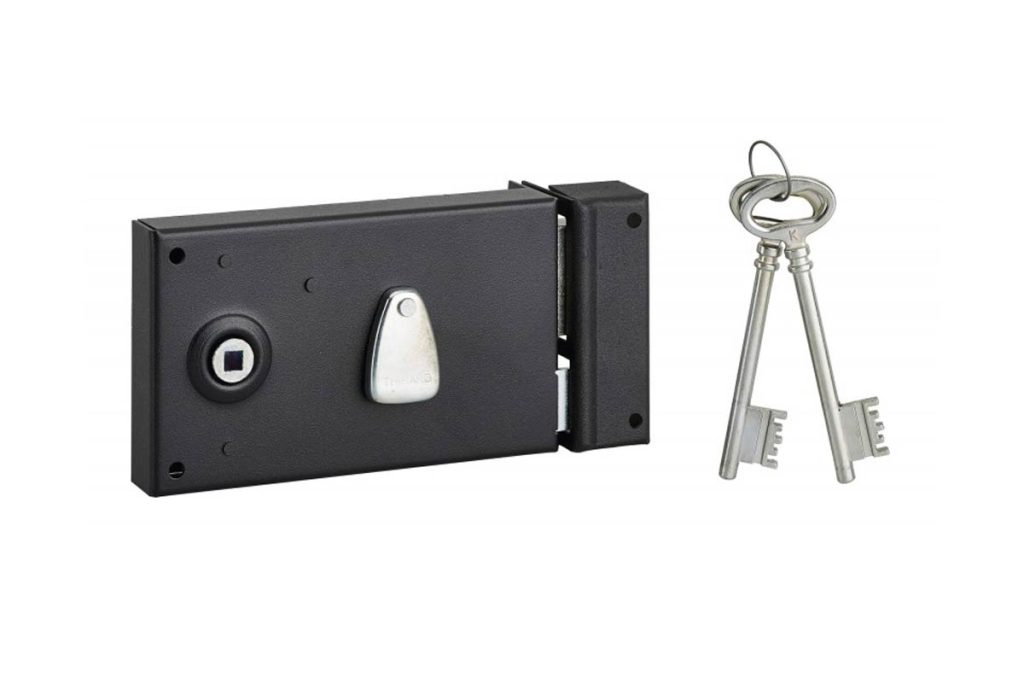Still very common in France, the tumbler lock is one of the safest old locks. It is commonly used for exterior doors, service doors, technical rooms and even for safes. If one or more of these locks are installed in your home or office, here is the important info you absolutely need to know.
Summary
Groove lock: what exactly?
A tumbler lock is a old lock equipped with moving parts (the grooves) which rise when the key is passed. In order for the barb to release the bolt (the iron handle which moves back and forth) and for there to be an opening, all the grooves must be raised simultaneously to the correct height.
Otherwise, the barb remains locked in the notch of the grooves and the lock remains closed. It is this mechanism which explains the interest aroused by tumbler locks; these are in fact deemed difficult to crochet.
The tumbler locks were invented by the Englishman Robert Barron in 1778. They mainly exist in two forms: the 4-tumbler lock and the 6-tumbler lock.
How to pick a tumbler lock?
To pick a tumbler lock is equivalent to press the grooves to force it to open. You can use it if you forgot your keys inside or if you have lost them. Four solutions can be used:
Hobbs hooks
Hobbs hooks work just like regular hooks. They apply pressure on the grooves to block them so that the lock opens. However, their handling requires regular practice.
The impression
The printing technique allows make a new key to open the lock without removing it. The process is simple, but requires patience and great precision in the gestures:
- Insert a blank (a blank key) into the lock and move it in a direction where you force the grooves lightly to leave marks;
- Take out the blank and identify the marks left by the grooves;
- Using a file, lightly file the part of the key where there are marks;
- Repeat the operation until the lock opens.
Saint-Pierre’s trousseaux
Those are bunch of fake keys which allow all tumbler locks to be opened. They are usually found in locksmiths, but their use is regulated.
Variable keys
Once inserted in the lock, the variable key makes it possible to simulate all the possible heights for the grooves. The opening is done on several successive attempts and by probing the grooves.
Of course he It is strictly forbidden to pick the lock of a door that is not yours.


How to maintain a tumbler lock?
The grooves of the lock being most often open, it frequently happens that impurities and humidity settle inside, thus preventing the correct functioning of the system. To eliminate them and give your lock a facelift:
- Clean the inside of the grooves with a compressor or pressurized air spray. The impurities and dust lodged in the cylinder will thus be released;
- Put a drop of oil on the key and put it in the lock. Make a few rotating movements to make sure that the mechanism is properly oiled;
- You can also apply a non-greasy lubricant in the lock to make operation even smoother.
Normally, with these three actions, your tumbler lock should work properly again. However, if the blockage persists, apply a small amount of penetrating oil to the lock. The effect is usually immediate.
Moreover, it is also recommended to clean your keys from time to time. Indeed, if they are rusted, they can deposit dirt in the lock with each use and affect its operation.
So, if you notice rust on your keys, soak them in a glass of Cola for 24 hours. Then wipe them with a soft cloth. They will regain their original appearance.
Finally, regarding the frequency of maintenance, it is recommended to clean and lubricate your tumbler lock and keys twice a year: at the end of summer to avoid freezing in winter and in spring.
Read also : Buy a turnkey house




